
Learning from the Museum Stars of TikTok
Mohamed
TikTok, a medium marked by its unique interface of short videos in infinite scroll, has been steadily on the rise in popularity since 2020. The platform had become so popular that it surpassed Google and Facebook as the most searched destination on the internet in 2021.
TikTok’s late success has been linked to several factors, mainly the solitary conditions of quarantine due to COVID-19. These same conditions have posed a great challenge for museums and the heritage sector, more broadly, the biggest and most evident challenge being the lack of public access to museums during lockdown periods. To tackle these challenges, an array of innovative projects, mostly virtual ones, have emerged out of museums.
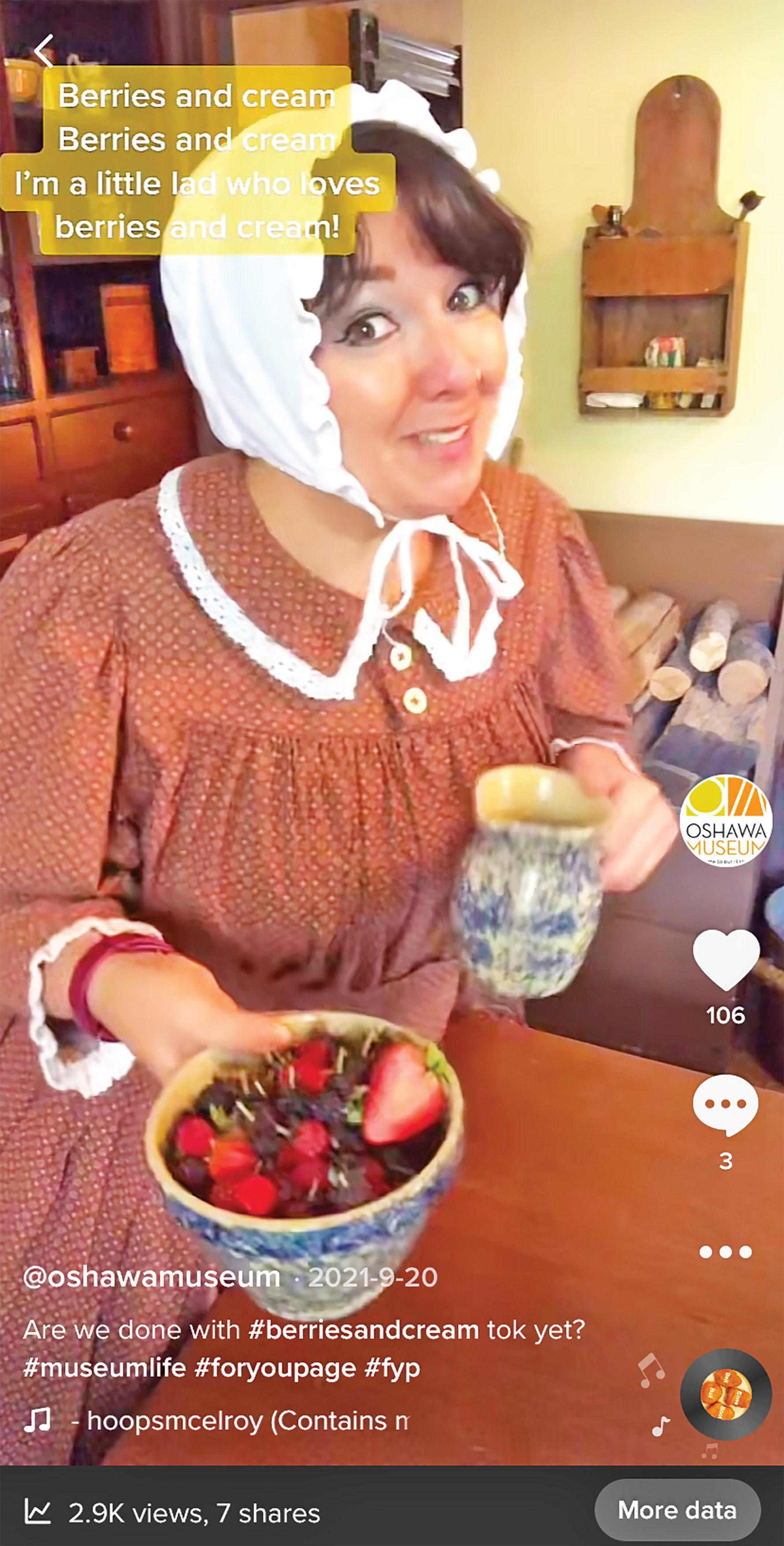 |
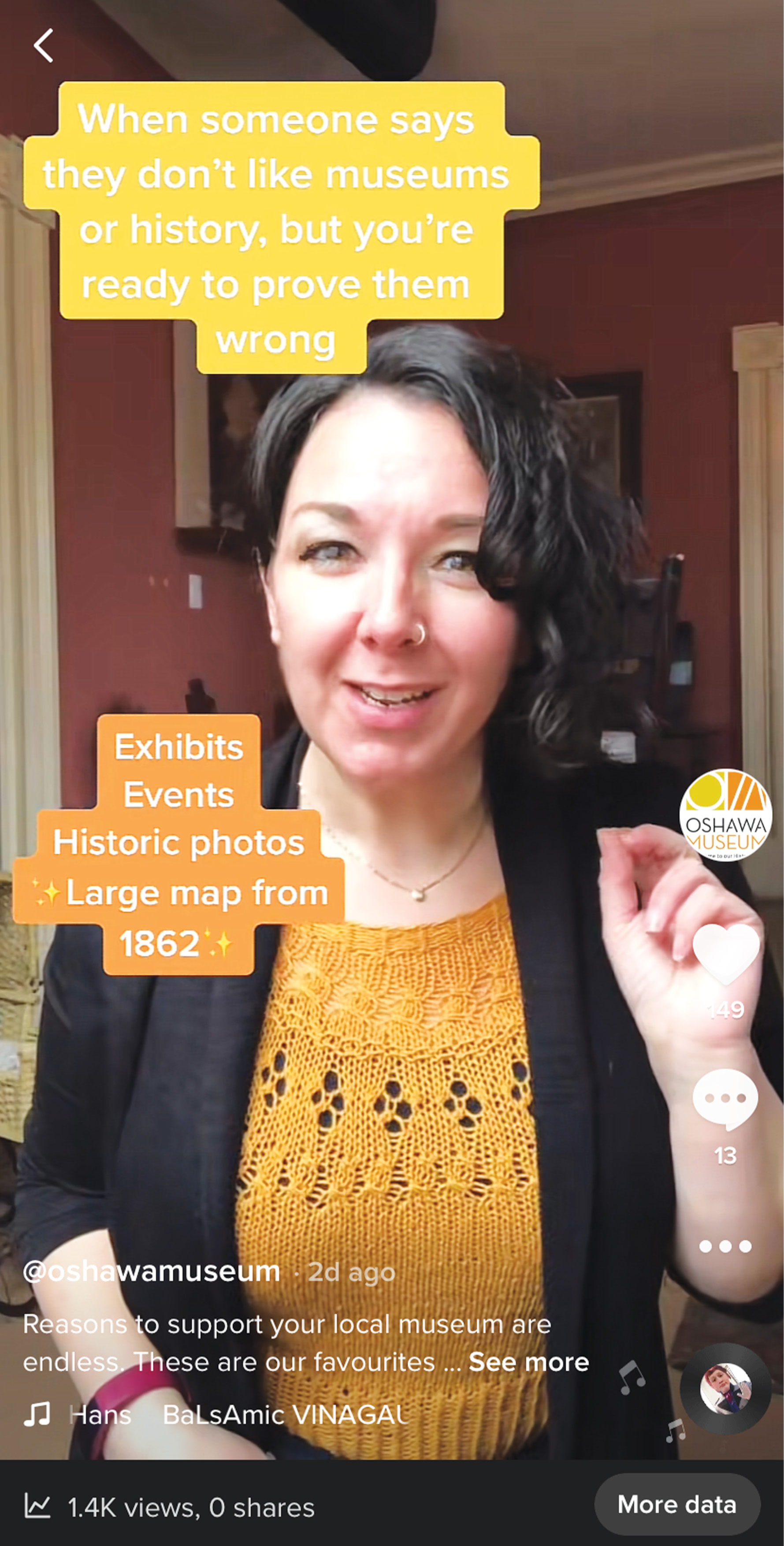 |
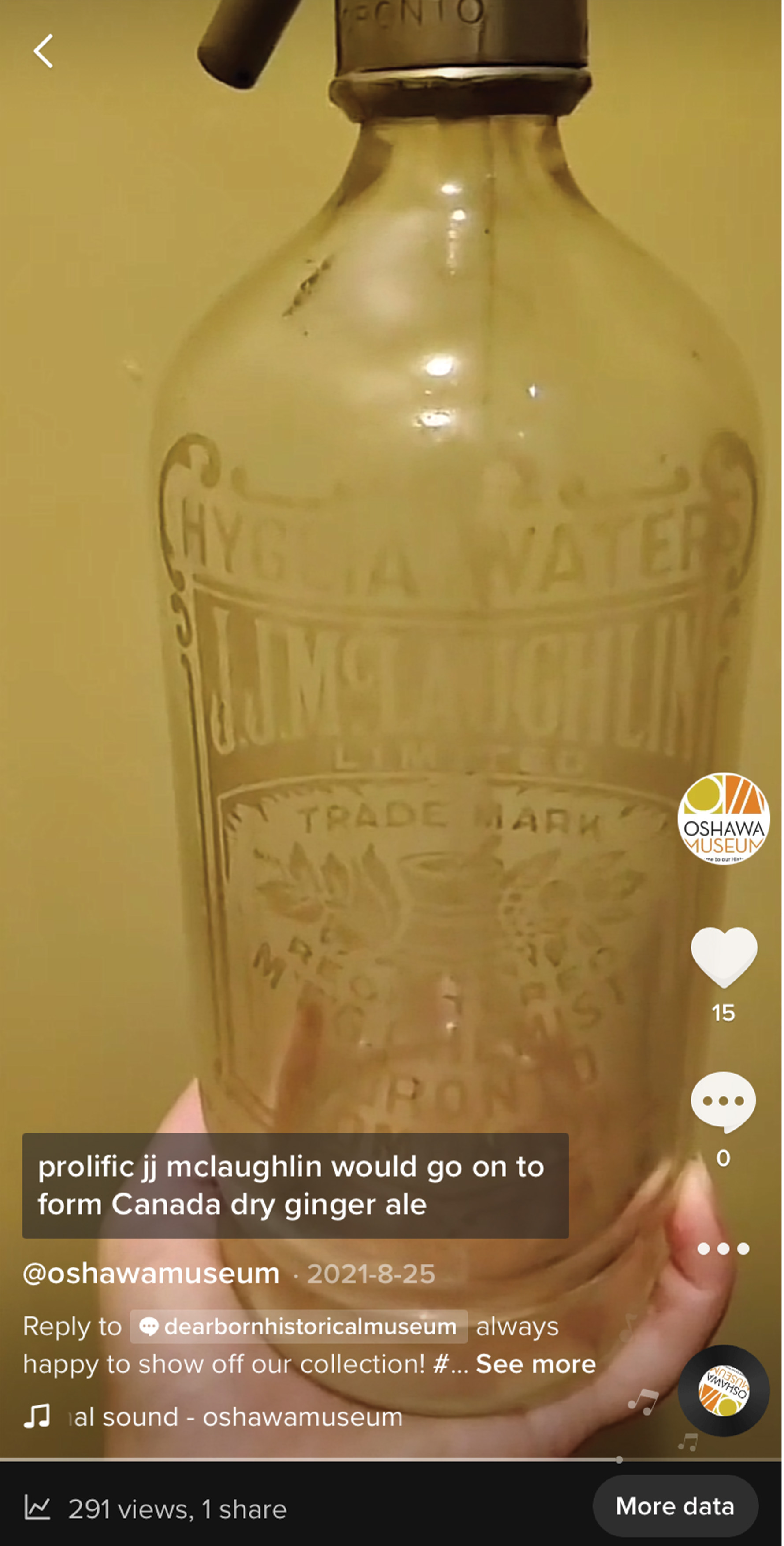 |
| Photos — Oshawa Museum | ||
In line with this trend, several museums within and beyond Canada have channelled their innovative capacities into TikTok, and have found positive experiences and outcomes.
When asked what incentivised them to use TikTok, most museums pinpointed the initial COVID-19 lockdown as the catalyst. “In 2020, like many of the museums around the world, we pivoted our outreach programming and engagement to focus on improving our digital assets. And thus our TikTok account was born.” describes Melissa Blunden, Executive Director of Lacombe Museum.
Blunden underscores how the lockdown put to test museums’ capacity for outreach in the digital age. Kim Jovinelli, Executive Director of the Lancaster Medical Heritage Museum, adds that the question of outreach capacity loomed over museums prior to the pandemic: “Museums have a bit of a reputation of being somewhat stuffy old buildings that are boring and unattainable. I wanted to show that we are not disconnected from the world around us, and I wanted to do it in an engaging way.”
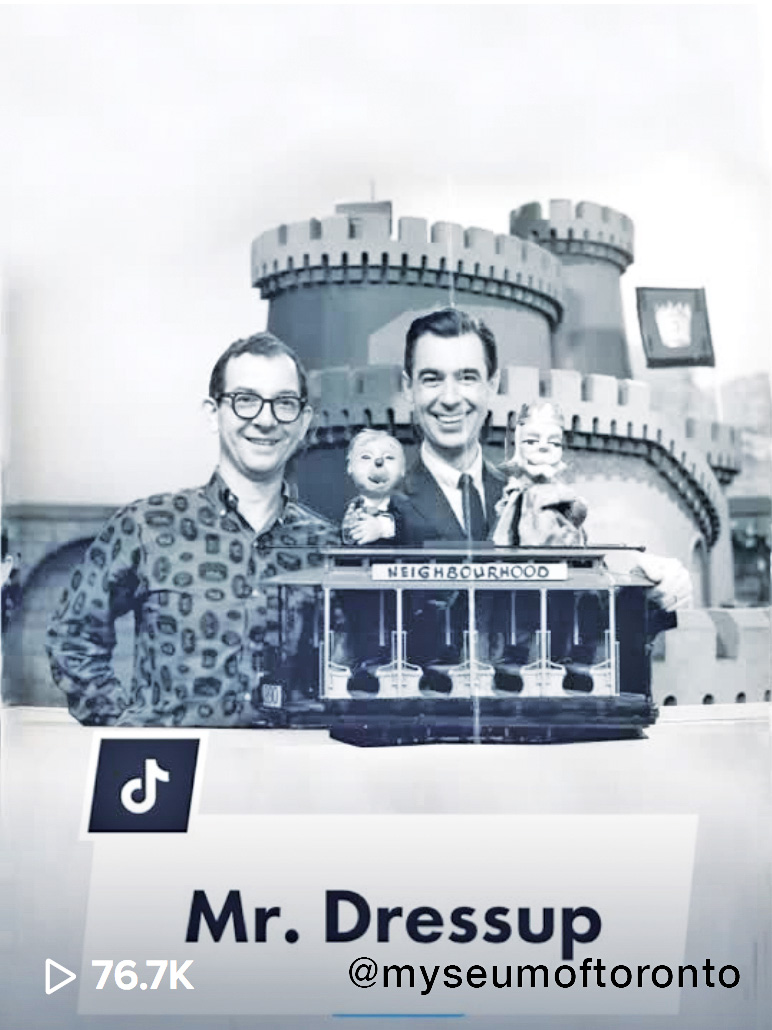 |
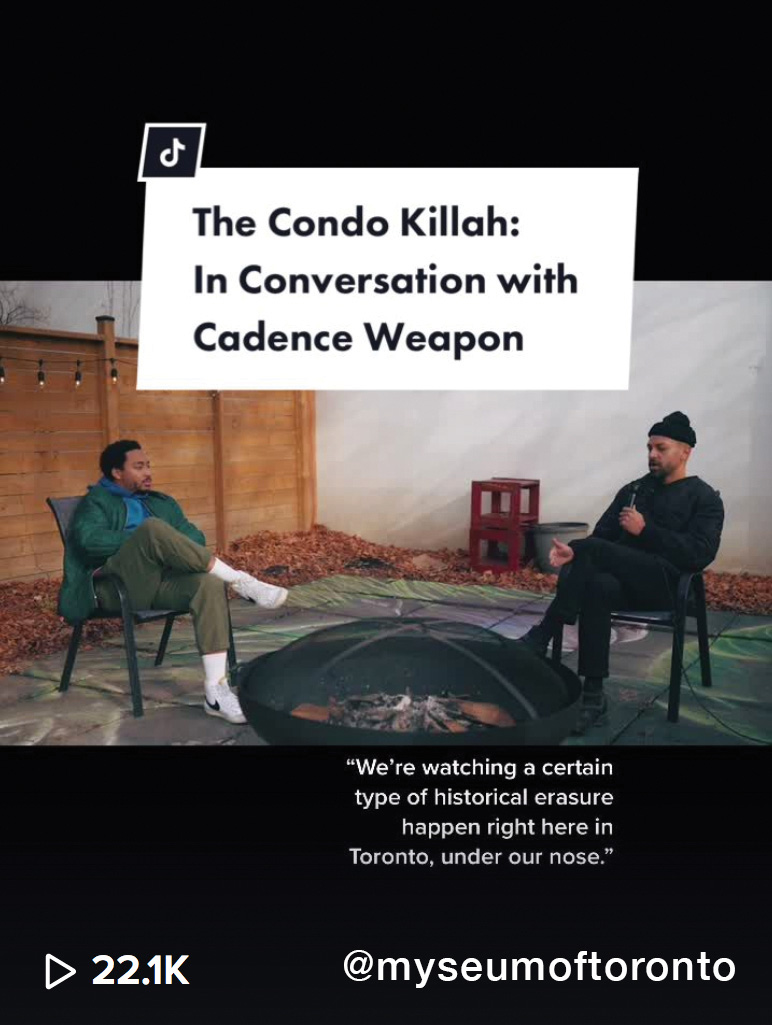 |
| Photos — Myseum of Toronto | |
A high level of flexibility is required to create content on booming social media platforms, and to counter the stereotype of being “boring and unattatinable.” This can be concerning to any museum professional who has faced trepidation or limitations set out by others outside of the communications team. Posting on TikTok is done best with the full support of a museum’s board. When asked about the response of their Boards of Directors, all museums surveyed said it has been positive. In fact, Mary-Katherine Whelan, Curator and Administrator at the Amherstburg Freedom Museum notes that “we signed up for TikTok at the encouragement of a Board Director.” This conveys how mutual trust and open communication can push museums into new frontiers.
The collaborative efforts of museum administration and staff members have also been acknowledged as invaluable to these museums’ success on TikTok. Chloé Houde, Digital Content Manager at Myseum Toronto, mentions that “the marketing team is responsible for the content creation, but the rest of our organization is indirectly involved.” However for the Natural History Museum in Berlin, “museums guides and researchers are the main characters of our TikTok videos,” says Marc Jerusel, Strategic Digital Communications Manager. Similarly, Lorenzo Schober, Marketing & Communications Director for the Museum of Vancouver, says that the collections and digitization staff are at the forefront of their TikToks.
As bigger museums have dedicated teams taking the lead managing the museum’s TikTok presence, smaller museums focused more on the role of interns and volunteer staff. For example, Oshawa Museum’s Community Engagement Lead, Lisa Terech, says “we had two summer students who were able to be on site and create many drafts. Our weekend staff (visitor hosts) have made appearances. And a high school co-op student has also helped with creating content.” Kim Jovinelli sums up the benefits of working with interns and volunteer staff: “They are the backbone of any museum. They provide a unique perspective as to what goes on in a museum. On occasions, I will even give them access to our platforms to let them post what they like with my guidance.”
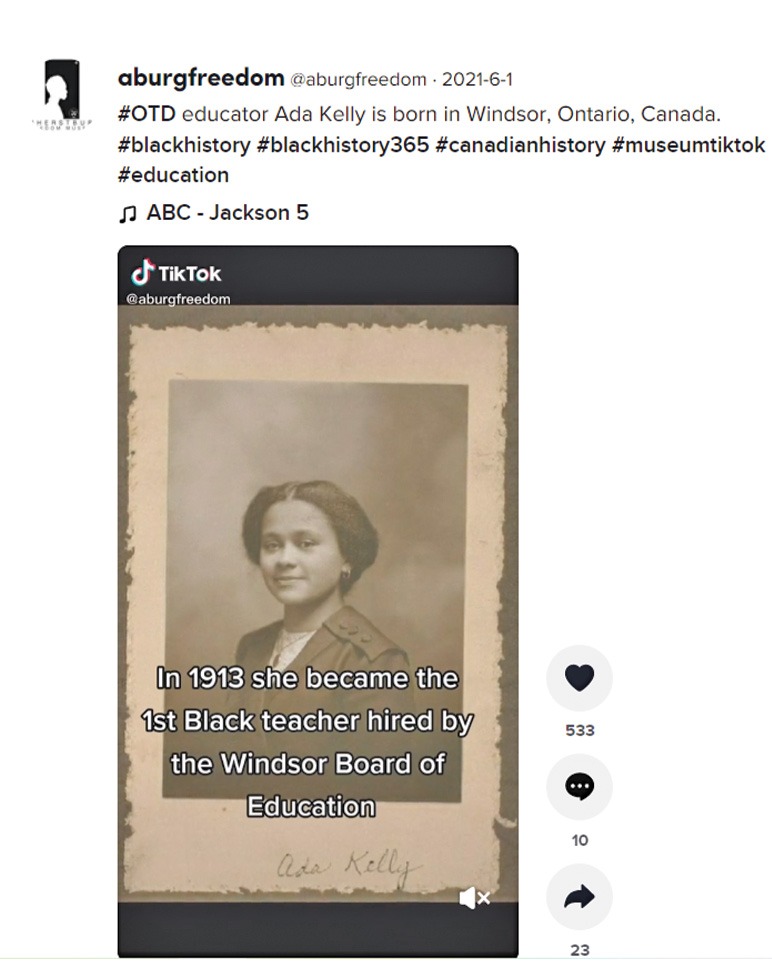 |
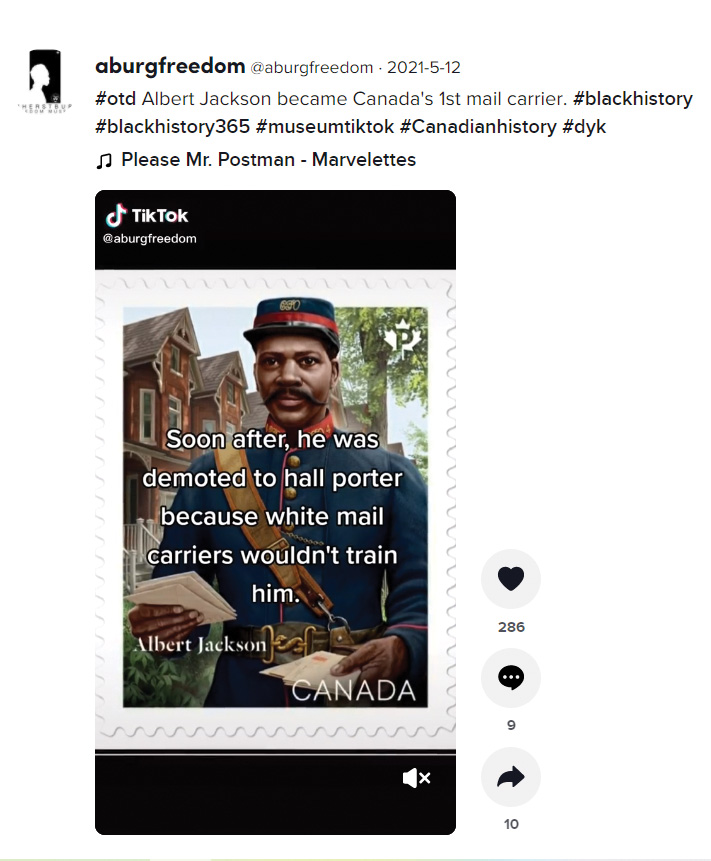 |
| Photos — Amherstburg Freedom Museum | |
Reviving an otherwise solemn museum environment due to COVID-induced lockdowns has been an added benefit to working on TikToks. When asked about TikTok being worthwhile, all museums responded with surprise that the platform has given them this much exposure. Jerusel from the Natural History Museum in Berlin says that “TikTok became our social network with the most followers in less than a year. Our livestreams reached more than 10,000, some of them more than 100,000 users. Looking at user comments, we reach more people who haven’t dealt with natural history topics before, wheareas on Instagram, for instance, we rather reach people ‘inside our bubble’.”
Reaching people beyond a specific circle has been a hallmark experience for many other museums on TikTok. Corrie Siegel, Executive Director of the Museum of Neon Arts explains that “we have seen a real change of engagement in our galleries, with people spending much more time with the work than they used to. The educational content we release on TikTok has helped prime visitors to ask questions, look closely and have a base level of knowledge to build upon during their visit.”
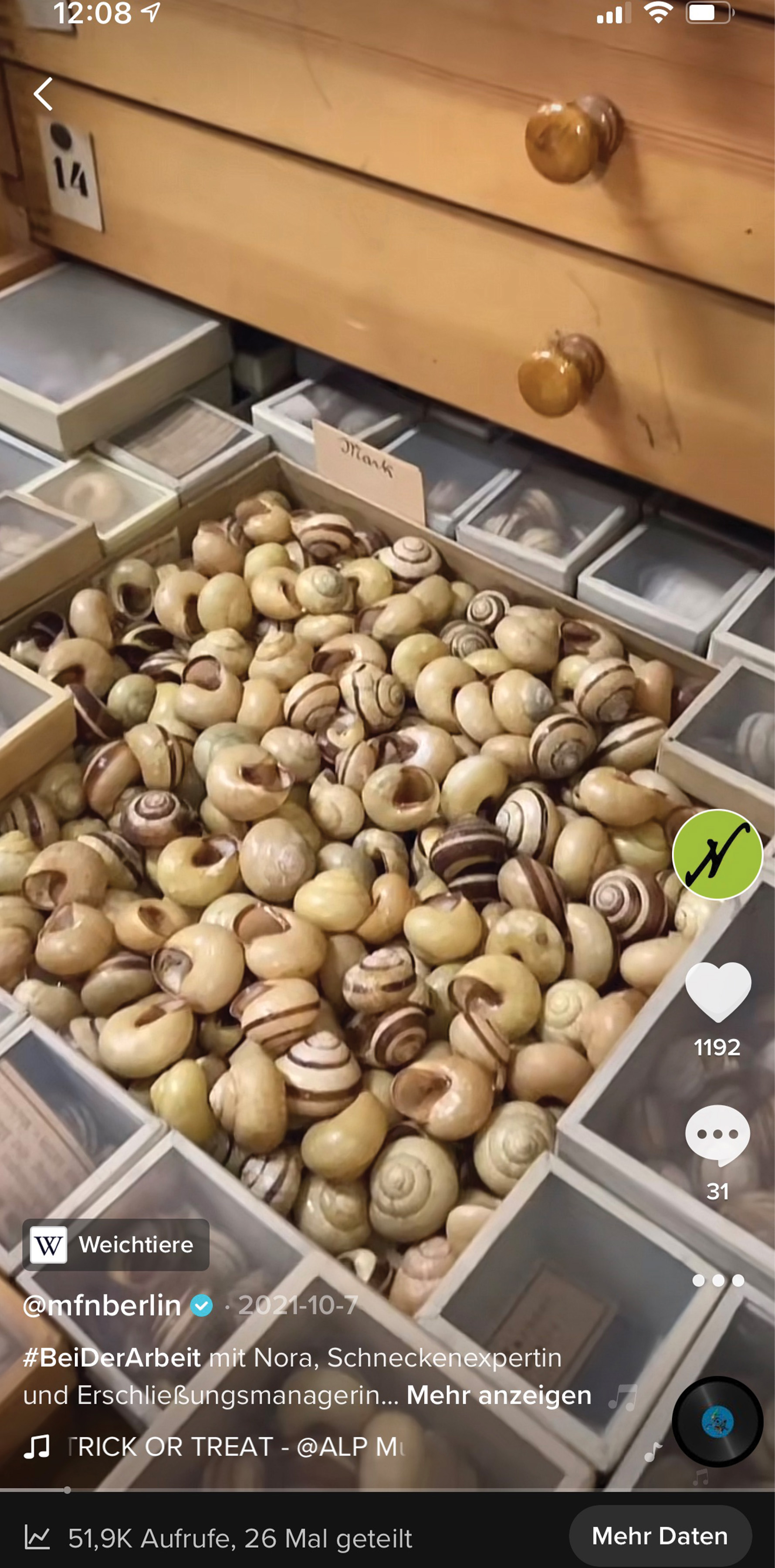 v
v
Photo — Museum für Naturkunde
On a microcontextual level, smaller museums with large TikTok accounts have had more direct exposure to their returns on investing in the app. Blunden from Lacombe Museum explains that “we’ve been dubbed ‘that museum on TikTok’ at the local Farmers Market, and more recently ‘that museum with the bathtub’ due to a seven-second video during renovations that showed a bathtub we were unaware of that had been boxed in at one of our heritage sites. The popularity of this video led to airtime on the local radio station, three interviews by local and regional newspapers, and more than 136,200 views on the TikTok app alone.”
Not only are these museums thriving on TikTok, but it seems as though the TikTok experience has altered their self-presentation. Yet, being Chinese-owned, TikTok has been subject to apprehension more than other social media platforms. In 2020, ex-president of the United States Donald Trump attempted to ban the platform via an executive order. Siegel from the Museum of Neon Arts, an American-based museum, remarks that “we were considering joining TikTok in July of 2020 but waited to join after it was clearer that the ban would not hold.” Although the order has since been revoked, suspicion remains about data collection methods and the use of that data. While the Canadian government has made no moves to block access, India banned TikTok among 59 other Chinese apps following a border clash between the two nations. The Canadian Ministry of Public Safety has previously affirmed that they would not be banning TikTok in the country, yet suspicions of a ban persisted as the case of Huawei executive Meng Wanzho was escalating.
It seems that TikTok bans, potential and real, pose an indirect threat to museums that have evolved to rely on the platform for their self-presentation. When asked about how such bans would affect their museums, most have responded with an attempt at remaining resilient. “It would be disappointing but not world ending for us,” mentions Terech from Oshawa Museum. Conversely, some have expressed more serious concerns about the ban. Schober from Museum of Vancouver states that “we would see an impact on engagement and audience demographics if such a ban were to be in place.”
“Any social media platform can remove your account, or the company itself can shut down or be bought out and disappear overnight,” reminds Blunden from Lacombe Museum. The precariousness of TikTok is not unique to the platform. Taking precautions when using these platforms for outreach is never bad. Nonetheless, the experiences of the museum stars of TikTok teach us that museums can persevere through any extenuating circumstances if enough creativity, trust and collaboration are employed. M
Mohamed is a Communications Officer at the Canadian Museums Association.
Top TikTok Tips
To help other museums interested in using TikTok, we have asked the museums surveyed for this article to give their best tips on how to get started:
- Set up your museum account to be a Creator Account (not a Personal or Business Account). You will find you have access to more audio content this way, and matching your videos to trending sounds is the best way to increase your audience and engagement numbers. (Lacombe Museum)
- Engage young content creators to help. We reached out to youth who were visiting and posting to help us launch our account and to help us see the museum through their eyes. (Museum of Vancouver)
- Seek out an audience. Sometimes it’s important to seek out other museum accounts to follow and build up your follower base, rather than wait for followers to find you (Amherstburg Freedom Museum)
- Be mindful of accessibility on TikTok. It is fairly limited in many ways, but captioning and voiceovers are great features you should be using. (Myseum Toronto)
- Have a content plan in place. Having a content plan in place means you can create a bunch of videos at once, save them in your drafts, and post more consistently. (Oshawa Museum)
- Don’t be afraid to get a little controversial (within reason). We have a reputation to keep, but TikTok is a great platform to engage discussion on issues relevant to your museum. (Lancaster Medical Heritage Museum)
- Trust in your audience. As long as you stick to your values and interests as an organization, you will find a curious and engaged community. We often learn from folks on Tiktok who are artists, chemists, historians and electricians. (Museum of Neon Art)
- If you’re able to, jump on trends! They are fun and they can get you views and followers while still being true to your site. (Oshawa Museum)
- Don’t sensationalize difficult subjects for views. It’s easy to fall into that trap, especially on a short-form video app that thrives on clickbait, but there is a way to address sensitive topics in a respectful manner. Stay authentic to your museum’s voice. (Myseum Toronto)
- Have fun with Tik Tok. The platform is meant for jokes, quick and digestible content, and engaging on a surface/introductory level. Stay away from posting content that is too authoritative in tone or too nuanced — this is where miscommunication and misunderstandings can occur. (Museum of Vancouver)
